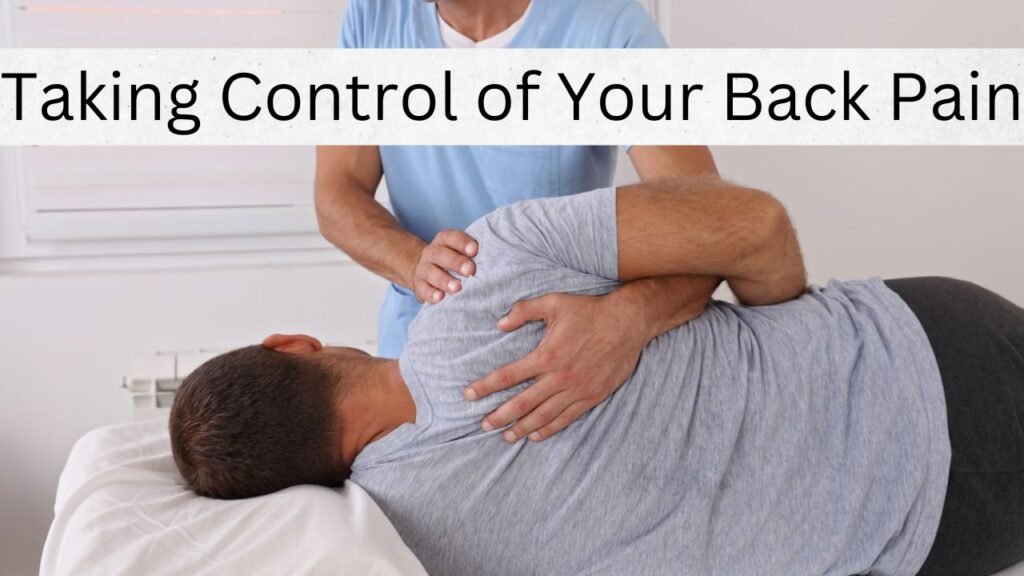Back pain is one of the most common health issues worldwide. It can be mild and temporary or chronic and debilitating. Regardless of severity, persistent back pain affects daily activities, work productivity, and overall well-being. Fortunately, there are effective ways to manage and reduce back pain for long-term relief. Understanding the causes, making lifestyle adjustments, and using evidence-based treatments can significantly improve your quality of life.

Understanding the Root Cause
Before finding a solution, it is crucial to identify the underlying cause of your back pain. The most common causes include:
- Muscle Strains and Sprains: Overuse, poor posture, or sudden movements can overstretch muscles and ligaments.
- Herniated or Bulging Discs: Spinal discs may shift out of place, pressing on nerves and causing pain.
- Degenerative Disc Disease: Aging leads to wear and tear of the spinal discs, reducing flexibility and cushioning.
- Spinal Stenosis: A narrowing of the spinal canal that puts pressure on nerves.
- Osteoarthritis: The breakdown of cartilage in the joints of the spine can lead to pain and stiffness.
- Scoliosis or Spinal Imbalances: Abnormal spinal curvature can cause discomfort and misalignment.
Determining the cause of your pain through medical evaluation allows for targeted treatment and long-term relief.
Lifestyle Changes for Back Pain Relief
Many people can manage back pain by making small but meaningful lifestyle changes. Here are some of the most effective adjustments:
1. Improve Your Posture
Poor posture puts excess stress on the spine. Whether sitting, standing, or sleeping, maintaining proper spinal alignment is key to reducing pain.
- When sitting, keep your feet flat, knees at a 90-degree angle, and use lumbar support.
- When standing, distribute weight evenly and avoid slouching.
- Sleep with proper spinal support using a medium-firm mattress and supportive pillows.
2. Stay Active with Low-Impact Exercises
A sedentary lifestyle can worsen back pain. Incorporating gentle exercises improves mobility, strengthens muscles, and supports spinal health.
- Walking: A low-impact way to keep your spine moving without strain.
- Swimming: Reduces pressure on joints while improving flexibility.
- Yoga & Stretching: Helps relieve tension and enhance core stability.
- Core Strengthening: Strengthening the abdominal and back muscles supports the spine and reduces the risk of injury.
3. Maintain a Healthy Weight
Excess weight puts additional strain on the spine. Losing even a small amount of weight can significantly reduce pressure on the lower back. A balanced diet rich in anti-inflammatory foods, such as leafy greens, lean proteins, and healthy fats, can aid in pain management.
Evidence-Based Treatments for Lasting Relief
While lifestyle changes play a major role, professional treatments can provide targeted relief. Consider these options based on your specific condition:
1. Physical Therapy
A physical therapist can design a personalized exercise plan to improve strength, flexibility, and posture. Targeted movements help restore mobility and reduce pain over time.
2. Chiropractic Care
Chiropractic adjustments help realign the spine, relieve tension, and improve mobility. This approach can be beneficial for those with misalignment or joint dysfunction.
3. Massage Therapy
Massage helps increase circulation, reduce muscle tension, and promote relaxation. Deep tissue massage is particularly effective for chronic back pain related to muscle tightness.
4. Medications
For short-term relief, doctors may recommend over-the-counter pain relievers like ibuprofen or acetaminophen. In some cases, muscle relaxants or prescription medications may be necessary.
5. Alternative Therapies
Some people find relief through acupuncture, heat therapy, or electrical stimulation (TENS therapy). These methods work by promoting circulation, reducing muscle tension, and blocking pain signals.
When to Seek Medical Attention
While many cases of back pain improve with self-care, some symptoms indicate a more serious issue requiring medical attention. Seek help if you experience:
- Severe or worsening pain that does not improve with rest
- Pain radiating down the legs (sciatica)
- Numbness, tingling, or weakness in the legs
- Loss of bladder or bowel control
- Unexplained weight loss alongside back pain
A doctor can diagnose underlying conditions and recommend appropriate interventions, such as imaging tests, injections, or surgery in severe cases.
Creating a Long-Term Pain Management Plan
Back pain management requires a consistent and proactive approach. By combining lifestyle changes, professional treatments, and self-care techniques, you can create a long-term plan for lasting relief.
Key Takeaways:
- Identify the cause of your back pain to find the right treatment.
- Improve posture, stay active, and maintain a healthy weight.
- Consider professional treatments like physical therapy or chiropractic care.
- Seek medical help for severe or persistent symptoms.
- Make pain management a continuous part of your lifestyle.
Taking control of back pain is possible with the right strategies. By making informed choices and staying consistent, you can reduce pain, improve mobility, and enhance your overall well-being.